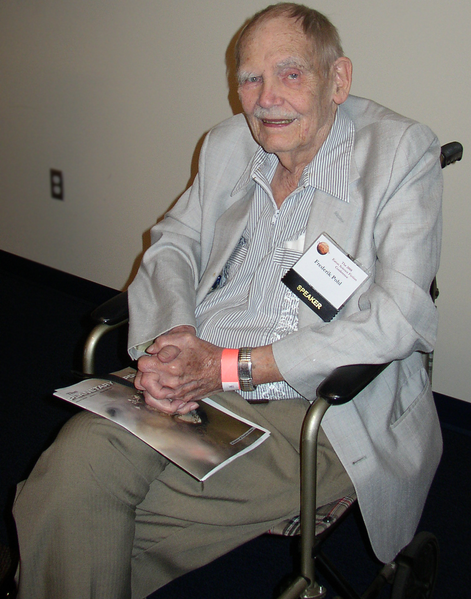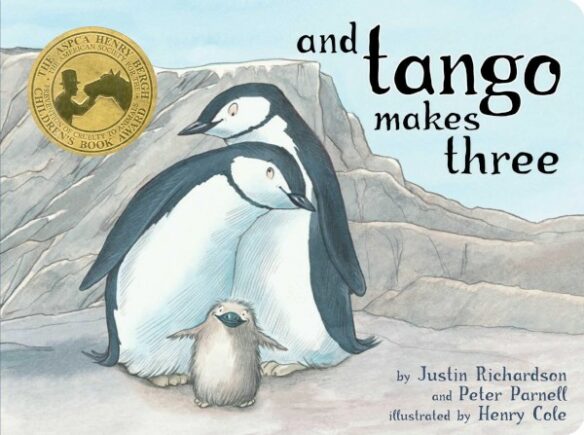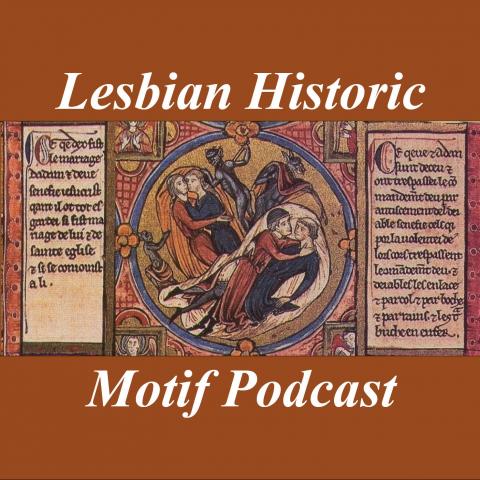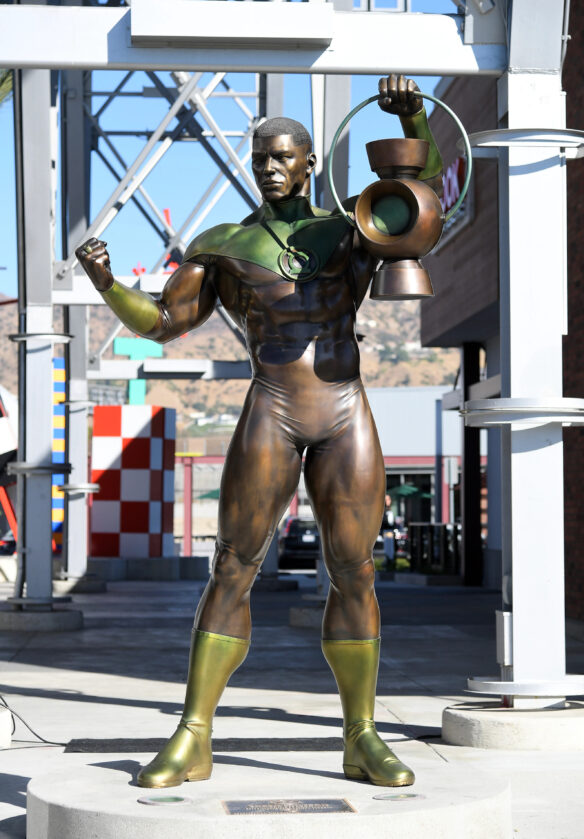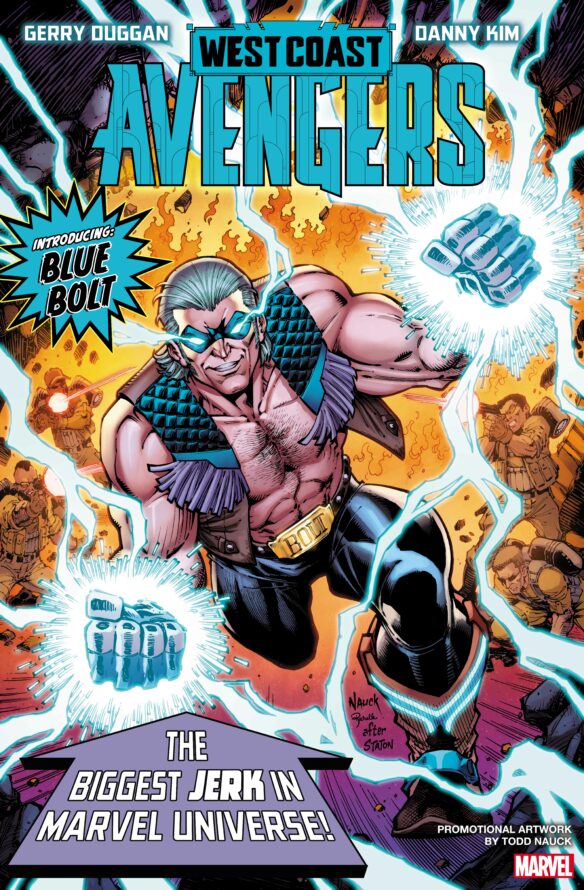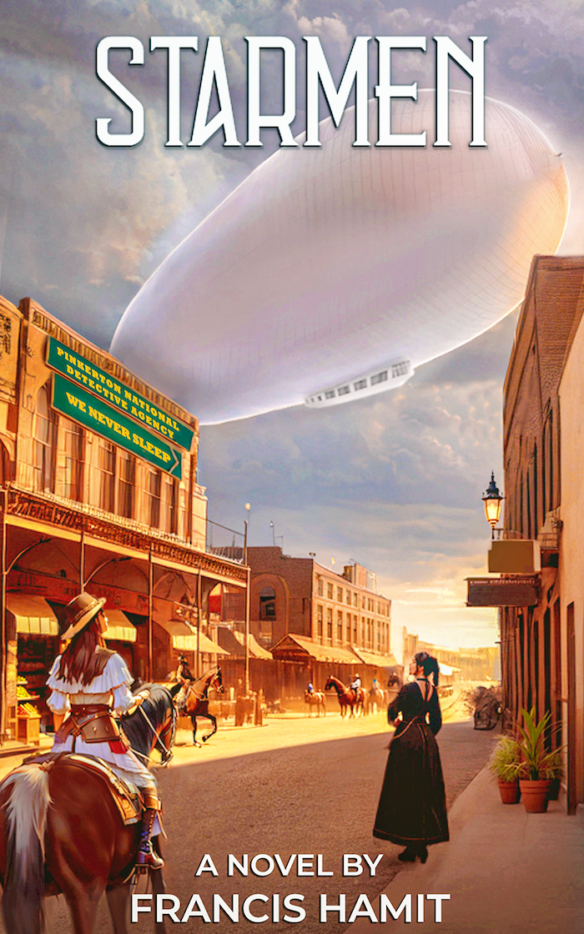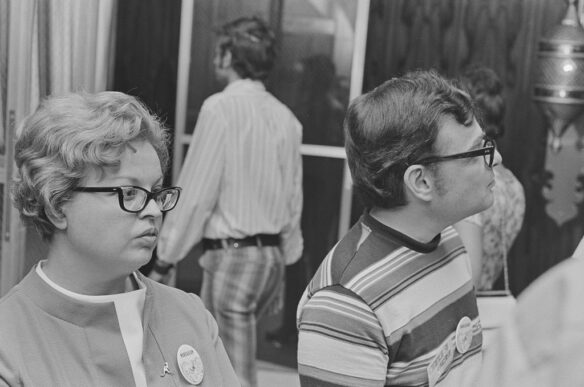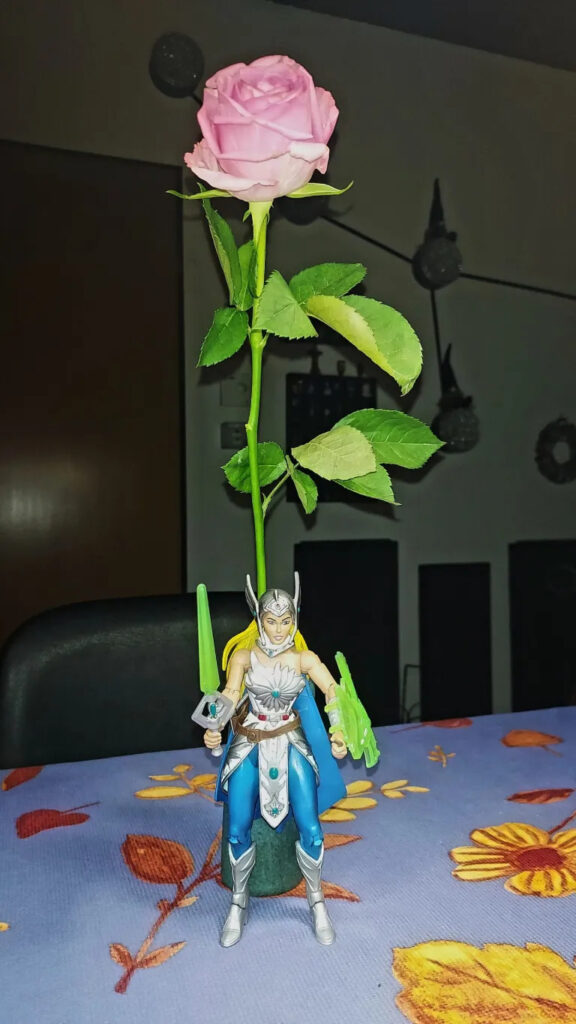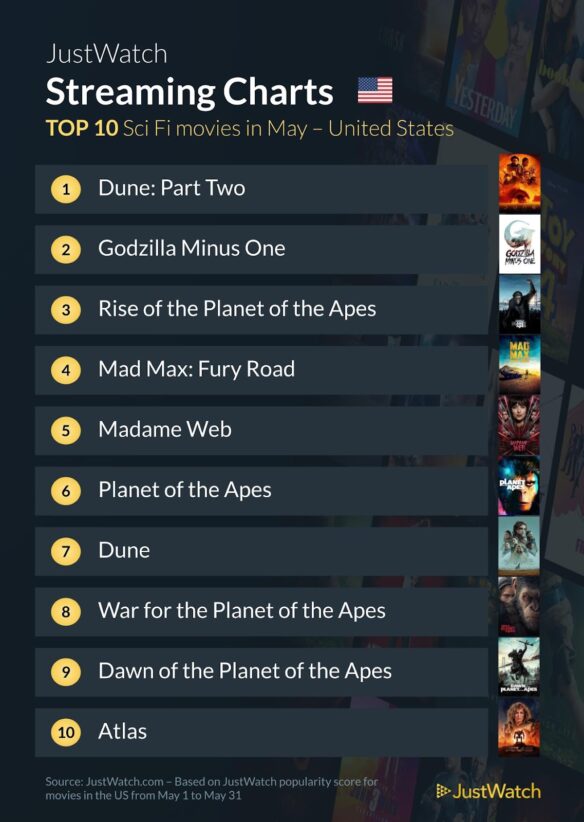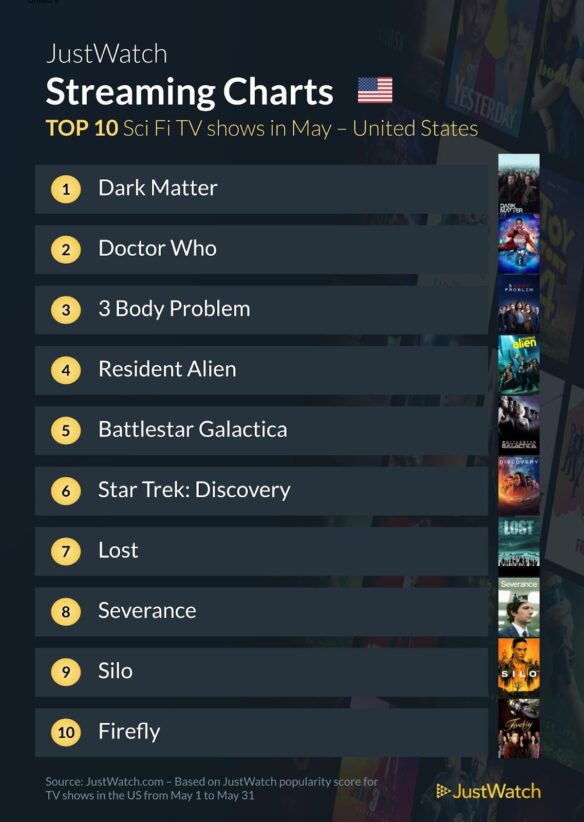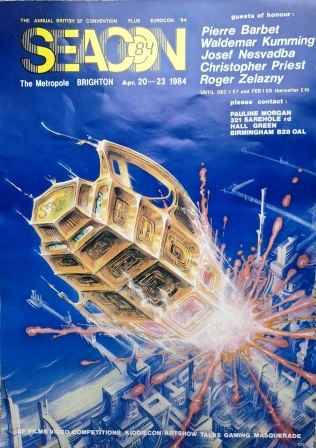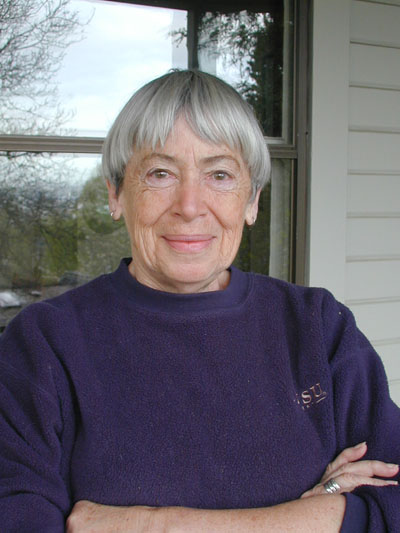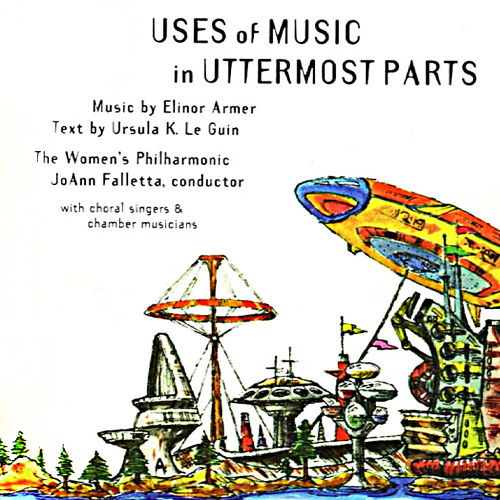(1) RADIO FREE BRADBURY. Phil Nichols’ new Bradbury 100 podcast tunes into “Ray Bradbury on Radio: SUSPENSE”.
This time, I look at the early years of Ray’s professional career, which saw him not only mastering the craft of short story writing and putting together his first book, but branching out into media – in particular, getting his stories and scripts onto national radio shows such as CBS’s Suspense.
Over a span of a dozen years, Suspense produced no fewer than eleven shows based on Bradbury stories, with some of the stories being produced multiple times. I argue that this early media presence – which included a number of stories previously unpublished – helped cement Bradbury’s growing popularity and reputation.
The direct link is here: “Episode 61 – Ray Bradbury and Radio’s SUSPENSE!” at SoundCloud.

(2) FUTURE TENSE. ASU Center for Science and the Imagination’s “Future Tense Fiction” story for January 2025 is “The Funniest Centaur Alive”, by Gregory Mone—a story about standup comedy, AI, and the ethics of human enhancement.
The response essay “The AI House of Mirrors” is by computer scientist Suresh Venkatasubramanian.
I spend my days thinking about collisions between tech—especially artificial intelligence—and society. There was a time when I could separate out that part of my day as work, but in 2025, such a division is no longer possible. Rather than simply think through these collisions, I now also live them, in nearly every corner of my life. AI is unescapable: I go to the grocery store and the radio is talking about the technology’s use in some sector or another. I go to get a haircut and we discuss smart mirrors that could show you virtual hairstyles to choose from. My child’s school insists on deploying some rather questionable software that claims to use AI to detect concerning behaviors or online communications and wants my consent to use it….
(3) AT THE HALF CENTURY. LA Review of Books introduces Jonathan Bolton’s review of The Dispossessed: 50th Anniversary Edition saying he “thoughtfully reads Ursula K. Le Guin’s ‘The Dispossessed’ within and against the grain of a half century of criticism”. “To Touch the Dust of Anarres”.
… Among political novelists, Le Guin stood out for her ability to blend different kinds of politics. She was fascinated by the grand politics of class and revolution—her novels are full of parliamentary factions, court intrigue, diplomats, spies, and rebels. As the Thuvian ambassador tells Shevek, “You have got to understand the powers behind the individuals.” But as a feminist and skilled imaginer of everyday life, she also had a sensitive eye for the mundane power struggles of “the personal is political.” Nor did she ignore the cruel paradoxes and structural violence of imperialism, playing out in both colony and metropole. Through it all, she maintained a keen sense of the pure force of ideas to move back and forth among these three political worlds. The Dispossessed is a running political conversation—full of intrigue and drama, to be sure—in which Shevek is forced to test and develop his anarchist ideals against a range of friendly and hostile interlocutors on both Anarres and Urras. These varied conversations leave no political idea unchallenged, even as Shevek preserves his ever-evolving anarchist ideals….
(4) BLACK HERITAGE IN HORROR. The Horror Writers Association has launched a month-long series: “Black Heritage in Horror Month 2025: An Interview with Jamal Hodge”.
What inspired you to start writing?
Pain, uncertainty, and hope. Honestly, I was a naive child, filled with joy at the thought of meeting another face. But when homelessness found my family in the South Bronx, I quickly learned that people weren’t always safe. Being exposed to ‘American history’ in school further revealed what it meant to be Black in this country, a trauma, in my view, that demands mental health support, like counseling, in schools. These harsh realities made me dream of a better world. I found that place within the pages of books, the ink of a pen, and the boundless depths of my own imagination.
What drew you to the horror genre?
Hope, survival, and truth. To me, horror encapsulates all of these. It transforms fear into something useful, something empowering, and even fun. Horror and fantasy were my first loves for precisely that reason: they validated our right to be scared, acknowledging that evil exists and that we live in a dangerous world. But they also illuminated our power to face terror head-on, to survive. That resonated with me.
(5) GROUP STATEMENT OPPOSING ANTI-TRANS EXECUTIVE ORDER. “Literary Organizations Release Joint Statement Decrying Anti-Trans Executive Order” – Publishers Weekly has the full text – read it at the link. Not sure how the 54 signing organizations were recruited, but neither the Authors Guild, HWA, nor SFWA is among them.
Following the release of an executive order signed by President Donald Trump on January 20, which asserts that his administration will implement “language and policies that recognize women are biologically female, and men are biologically male,” a large number of major organizations in the book business and literary world released a statement decrying the move. Among them are the American Booksellers Association, Audio Publishers Association, Comic Book Legal Defense fund, EveryLibrary, Independent Book Publishers Association, IngramSpark, National Book Critics Circle, PEN America, PubWest, Society of Children’s Book Writers and Illustrators, and many more.
The statement says in part:
…Trans, nonbinary, and intersex experience is vastly underrepresented in literature but disproportionately targeted by bans. During the 2022-2023 school year, 30% of books banned included LGBTQIA+ characters or themes. Such censorship robs us of perspectives that enrich the American story. Though the executive order in question tries to paint LGBTQIA+ people and allies as bullies enforcing their perspective on others through “legal and other socially coercive means,” that’s exactly what the order itself does, just as book-banning pressure groups have done since 2020 in school boards and libraries around the country. The fate of trans, intersex, and nonbinary people is not a political ideology, it’s a matter of human rights, civil rights, and freedom of expression. Government erosion of those rights should concern all Americans, regardless of their investment in LGBTQIA+ literature specifically.
This executive order is censorship, pure and simple, and it has no place in a free society. It must be rescinded or stayed as soon as possible, and at the latest, before the earliest implementation deadline, February 19, 2025….
(6) ELLIOTT SHARP Q&A. Interviewer Rob Thornton reaches back 25 years to share – “Archival Interview (2000): Elliott Sharp on Sci-Fi, Spoken Words, and Sound”.
In 2000, I did an email interview with Sharp about his work with Seeing Eye Theater, why he’s a science fiction fan, and how his approach to music has been shaped by science fiction.
There are many authors who read for Seeing Eye Theater. Did you choose to work with Murphy, Goonan, Womack & Shepard or did Seeing Eye Theater introduce you to them?
I had met the producer, Tony Daniel, through Ellen Datlow, Jack Womack, and Lucius Shepard when doing a performance. He told me that he had followed my work. the next step was easy. I’ve followed sci-fi since I first began to read and had been a longtime fan of Jack. Pat, and Lucius.
We’ve performed together on a number of occasions and I had included all of them reading in a compilation of one-minute pieces called State of the Union. Tony, as producer, makes the choices. I certainly offer feedback. I did become a fan of Kathy Ann Goonan’s after working with her on a Seeing Ear Theater production….
There’s a whole library of “Seeing Eye Theater (Radio)” episodes available at YouTube.
(7) SATURN ON THE BLOCK. A forthcoming episode of Antiques Roadshow will feature “1986 Leonard Nimoy Saturn Life Career Award”. I’m thinking, come on, it’s a Saturn Award, what can that be worth? Well, it seems that having Leonard Nimoy’s name on it raises it well above the value of the average bowling trophy. The figure is named in this clip.
(8) DAVID EDWARD BYRD (1941-2025). Deadline reports: “David Edward Byrd Dead: Artist Behind Iconic Rock And Broadway Posters”. Here’s a brief excerpt from the obituary, with his best-known genre work bolded.
…For some devotees, though, Byrd left his most indelible impression on Broadway, designing some of theater’s most influential and best-remembered posters and logos. He created the gorgeously garish and grisly poster for The Little Shop of Horrors, a more muted 1971 poster for Jesus Christ Superstar combining cathedral art and rock imagery, and that same year, the iconic poster for Follies, the Stephen Sondheim-James Goldman musical about a reunion of aging showgirls.
In the 1980s, Byrd worked as Art Director for Van Halen and designed posters for Los Angeles theaters including The Mark Taper Forum and The Ahmanson Theatre.
While his work might best be remembered by folks of a certain age, at least one set of his illustrations is well-known to a younger generation: He designed the richly colorful covers for the first three Harry Potter books.
In 2023, Byrd published his autobiography Poster Child: The Psychedelic Art & Technicolor Life of David Edward Byrd, chock full of the poster art that has delighted untold numbers of observers….
(9) TODAY’S BIRTHDAY.
[Written by Paul Weimer.]
February 6, 1922 — Patrick Macnee. (Died 2015.)
By Paul Weimer: “There are those who believe that life here began out there. Far across the universe, with tribes of humans…some believe there may be brothers of man who yet now fight to survive…”
My first encounter with the work of the formidable Patrick Macnee was, improbably, in Battlestar Galactica. His voice is the unmistakable one in the opening credits to the 1978 series. In addition, he also showed up in a two part episode as “Count Iblis”, who was, as far as I can figure, a fallen angel or the outright devil himself. And also he showed up at least once as the Imperious Leader, the head of the Cylons. That striking British baritone voice of his served him well and was unmistakable.
It would be years, though, before I encountered The Avengers and his role in that, proper. In fact, I had somehow missed the existence of The Avengers for years, and didn’t know it existed or that I might like it. It was the Amber Diceless Roleplaying Community that clued me in. A particular GM and player in that community had a penchant for playing characters who were versions of John Steed himself. The first couple of games I played with him in it, I didn’t quite get who he was “supposed to be”. I finally got a chance between games, to actually ask him about the character — I was embarrassed because it seemed I was the only one who wasn’t “in on it”. And so he told me, and urged me to see The Avengers for myself.
And then I finally saw the series itself on VHS tape. While there were several partners (Diana Rigg’s Mrs Peel being just the most prominent), the anchor of that relationship was McNee’s stalwart John Steed. I immediately finally saw what my fellow roleplayer was doing. And why he would model his character and his very con appearance (complete with a bowler hat and an umbrella, although he preferred white to black. It all clicked. The stalwart, competent and implacable and unflappable gentleman that Macnee portrays is tailor made for borrowing as a character template, or just a fashion template. What a fascinating character! An excellent spy, cultured, intelligent, and always prepared. And a perfect gentleman who wasn’t above some very above board wordplay with his associates. I think that Macnee so created and inhabited the role is a reason why attempts to reboot the character in media have gone from horrible (sorry, Ralph Fiennes) to forgettable (the Big Finish audio dramas).
Macnee also shows up in series and roles ever since, from Columbo to Sherlock Holmes to an episode of the series Frasier where he plays a psychiatrist.
A class act, throughout his acting career. He died in 2015. Requiescat in pace.

(10) COMICS SECTION.
- Brevity may have mashed up Dickens and Doyle.
- Dog Eat Doug makes it someone else’s problem.
- F Minus stays chill.
- Macanudo should be used to the jump.
- Reality Check turns an album into a recipe.
(11) ON A ROLL. The New York Times tells readers about a game involving “Intergalactic Shantytowns Where Dice Dictate Your Future” (behind a paywall.)
The dice roll is the fundamental engine of numerous games. In a board game, it might determine what type of resources you receive or how far you can move. In tabletop role-playing games, it might determine whether an action is successful. When you swing your sword at an ogre, does it land a fatal blow? Or does your blade accidentally glance off a nearby statue and clatter uselessly to the ground? The dice decide.
Although video games often use similar systems to decide the outcome of a player’s actions, the dice roll itself — the machinery of chance — is typically concealed.
“The idea with video games is they’re supposed to be this warm bath of immersion that you disappear into,” said Gareth Damian Martin, whose new game Citizen Sleeper 2: Starward Vector subverts convention by placing the dice center stage.
The dice in Citizen Sleeper 2, which releases for PCs and consoles on Friday, can be spent on actions within a cyberpunk future where mercenaries, scavengers and outcasts eke out a hardscrabble living on the margins of a galaxy ruled by rival corporations. The higher the number of an assigned die, the greater the chance that the player will successfully work shifts in an intergalactic kelp bar, sell scrap engine components down at the shipyards or overthrow a corporation as part of a labor revolution.
“The process of abstracting things to dice gives an incredible flexibility to storytelling,” said Damian Martin, who uses they/them pronouns. “The game inherently supports you and creates drama from any situation.”…
(12) TANGLED UP IN BLUE. Deadline introduces “’Smurfs’ Trailer: First Footage Of Rihanna’s Smurfette”.
…The synopsis: When Papa Smurf (John Goodman) is mysteriously taken by evil wizards, Razamel and Gargamel, Smurfette (Rihanna) leads the Smurfs on a mission into the real world to save him. With the help of new friends, the Smurfs must discover what defines their destiny to save the universe….
(13) NOT WITH A BANG. [Item by Steven French.] It’ll be interesting to see whether AI can describe the end of the universe before it brings about the end of the world: “AI to revolutionise fundamental physics and ‘could show how universe will end’”.
Advanced artificial intelligence is to revolutionise fundamental physics and could open a window on to the fate of the universe, according to Cern’s next director general.
Prof Mark Thomson, the British physicist who will assume leadership of Cern on 1 January 2026, says machine learning is paving the way for advances in particle physics that promise to be comparable to the AI-powered prediction of protein structures that earned Google DeepMind scientists a Nobel prize in October.
At the Large Hadron Collider (LHC), he said, similar strategies are being used to detect incredibly rare events that hold the key to how particles came to acquire mass in the first moments after the big bang and whether our universe could be teetering on the brink of a catastrophic collapse….
(14) ORIGIN STORY. [Item by SF Concatenation’s Jonathan Cowie.] OK, so you are an SF fan, but could you be a multibillionaire? Now, I have occasionally dreamed of having a superpower and if I ever did I guess it might be the USA. However, you don’t have to be born on Krypton or be bitten by a radioactive spider. All you need — as Bruce Wayne and Tony Stark showed — is lots and lots of dosh, and then you can even influence things on the national stage. But in real life one SF enthusiast did just this, and it is this interest of his in SF that gives us a clue as to his beliefs, as a BBC Radio 4 series of half-hour programmes reveals…
The story of Elon Musk, the way it’s usually told, makes him sound like a fictional character, a comic-book superhero – or supervillain. He’s the world’s richest man, and now an adviser to the US President. He uses X – his social media platform – to berate politicians he doesn’t agree with around the world.
He plans to put chips in people’s brains, and to save the world by colonising Mars. Musk’s visions of the future seem to stem from the science fiction that has fired his imagination since he was a boy. But what’s the real story, the true history, behind the comic book? Back in 2021 Harvard History Professor and New Yorker Writer Jill Lepore became fascinated by this question.
So she made a Radio 4 podcast which tried to explain Musk through the science fiction he grew up with – tales of superheroes with origin stories that seemed to influence how he understands his own life. So much has happened since then that we decided to update that series – and add three new episodes, too. Because Musk keeps changing, and so does what Lepore calls ‘Muskism’ – his brand of extreme capitalism and techno-futurism. And strangely, his origin story keeps changing, too.
How can understanding these fantasy stories – some of them a century old – help us understand the future Musk wants to take us to?
You can listen to the first episode here: “Introducing X Man: The Elon Musk Origin Story”.
(15) NO LAST OF US. [Item by SF Concatenation’s Jonathan Cowie.] There is a review of fungi impact on Earth’s ecosystems – “Fungal impacts on Earth’s ecosystems” — in this week’s Nature.
Here, we examine the fungal threats facing civilization and investigate opportunities to use fungi to combat these threats….
This is an excellent overview but, alas, no mention of The Last of Us…!
(16) THEY KNOW WHERE THE SKELETONS ARE. Hollywood Graveyard combines filmmaking history with the pastime of tracking down celebrity graves. Can you guess what movie this installment focuses on? “Graves From The Black Lagoon : A Famous Grave Film”.
[Thanks to SF Concatenation’s Jonathan Cowie, Steven French, Kathy Sullivan, Joey Eschrich, Rob Thornton, Danny Sichel, Teddy Harvia, Mike Kennedy, Andrew Porter, John King Tarpinian, Chris Barkley, and Cat Eldridge for some of these stories. Title credit belongs to File 770 contributing editor of the day Dan’l.]


